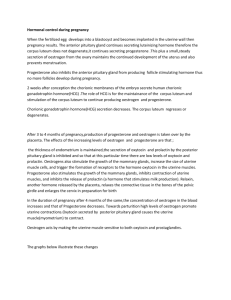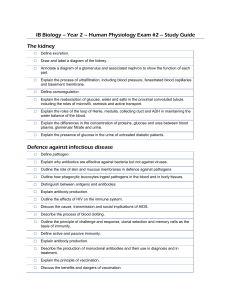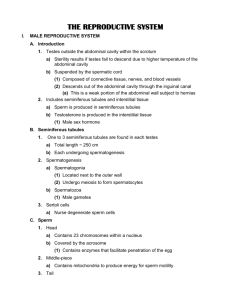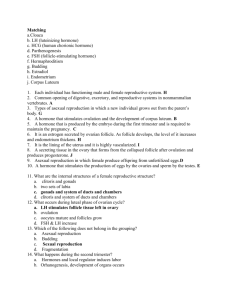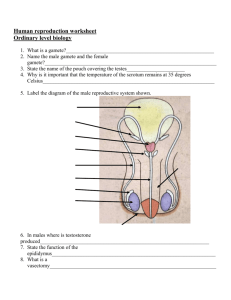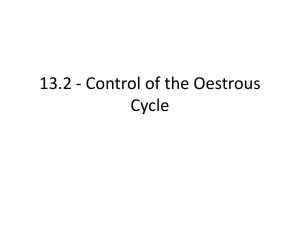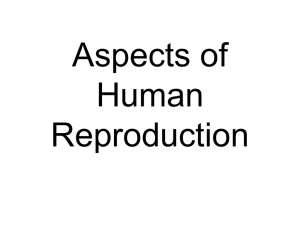Gametogenesis and Hormone Control
advertisement
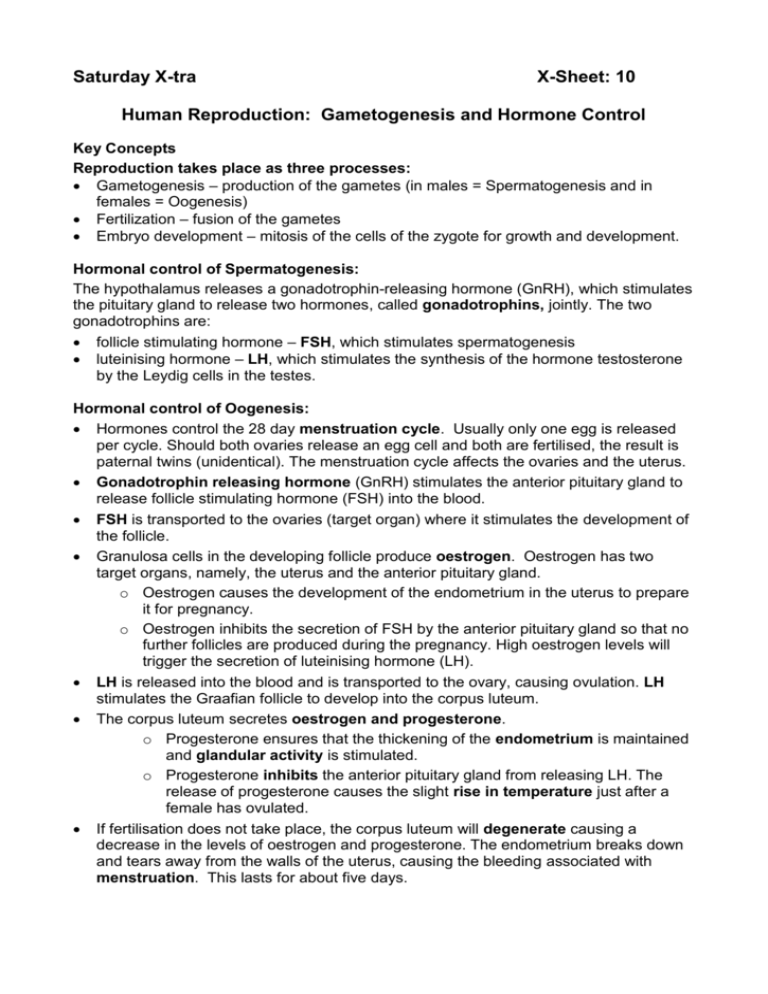
Saturday X-tra X-Sheet: 10 Human Reproduction: Gametogenesis and Hormone Control Key Concepts Reproduction takes place as three processes: Gametogenesis – production of the gametes (in males = Spermatogenesis and in females = Oogenesis) Fertilization – fusion of the gametes Embryo development – mitosis of the cells of the zygote for growth and development. Hormonal control of Spermatogenesis: The hypothalamus releases a gonadotrophin-releasing hormone (GnRH), which stimulates the pituitary gland to release two hormones, called gonadotrophins, jointly. The two gonadotrophins are: follicle stimulating hormone – FSH, which stimulates spermatogenesis luteinising hormone – LH, which stimulates the synthesis of the hormone testosterone by the Leydig cells in the testes. Hormonal control of Oogenesis: Hormones control the 28 day menstruation cycle. Usually only one egg is released per cycle. Should both ovaries release an egg cell and both are fertilised, the result is paternal twins (unidentical). The menstruation cycle affects the ovaries and the uterus. Gonadotrophin releasing hormone (GnRH) stimulates the anterior pituitary gland to release follicle stimulating hormone (FSH) into the blood. FSH is transported to the ovaries (target organ) where it stimulates the development of the follicle. Granulosa cells in the developing follicle produce oestrogen. Oestrogen has two target organs, namely, the uterus and the anterior pituitary gland. o Oestrogen causes the development of the endometrium in the uterus to prepare it for pregnancy. o Oestrogen inhibits the secretion of FSH by the anterior pituitary gland so that no further follicles are produced during the pregnancy. High oestrogen levels will trigger the secretion of luteinising hormone (LH). LH is released into the blood and is transported to the ovary, causing ovulation. LH stimulates the Graafian follicle to develop into the corpus luteum. The corpus luteum secretes oestrogen and progesterone. o Progesterone ensures that the thickening of the endometrium is maintained and glandular activity is stimulated. o Progesterone inhibits the anterior pituitary gland from releasing LH. The release of progesterone causes the slight rise in temperature just after a female has ovulated. If fertilisation does not take place, the corpus luteum will degenerate causing a decrease in the levels of oestrogen and progesterone. The endometrium breaks down and tears away from the walls of the uterus, causing the bleeding associated with menstruation. This lasts for about five days. Terminology & definitions Corpus luteum: structure that results when the Graafian follicle releases the egg cell during ovulation. The corpus luteum also secretes progesterone if the egg is fertilised Follicle stimulating hormone: (FSH) produced by the anterior lobe of the pituitary gland, causes the maturing of the follicle surrounding the oocyte, and stimulates the supply of nutrients Gametogenesis: the formation of gametes Gonadotrophic hormones: hormones secreted by the pituitary gland to control reproductive cycles and processes in males and females Luteinising hormone (LH): a hormone produced by the anterior lobe of the pituitary gland that stimulates the release of oestrogen into the bloodstream which causes ovulation Menstrual cycle: this cycle begins with menstruation and continues for 28 days. It is controlled by hormones to co-ordinate the release of the mature egg cell with the readiness of the uterus for implantation if fertilisation takes place Menstruation: when there is no fertilisation, the lining of the uterus is shed to prepare for the next cycle. This results in a flow of blood that lasts for approximately 5 days Oestrogen: a hormone secreted by the ovaries, causing ovulation Oogenesis: the process to produce haploid egg cells in the follicles of the ovary Progesterone: a hormone secreted by the corpus luteum when the egg cell is fertilised to ensure pregnancy Diagrams: Gametogenesis showing Spermatogenesis and Oogenesis Make sure that you know these diagrams, as they are often asked in examinations. X-ample Questions Question 1: The diagram below represents a cross-sectional view of a human seminiferous tubule in which spermatogenesis is occurring. Study the diagram and answer the questions that follow: 1.1. Name the hormone produced by the cells of Leydig. (1) 1.2. Name ONE function of the hormone named in QUESTION 1.1. (1) 1.3 How many chromosomes are in each of the following? 1.4 a) Spermatogonium cell (1) b) Spermatid (1) Explain the importance of spermatogenesis as a mechanism to introduce variation by referring to prophase 1 and metaphase 1. (4) Question 2 Study the graph below, which shows the menstrual cycle and the influence of the different hormones on it. 2.1. On which day does ovulation take place? 2.2. Between which days does menstruation take place? 2.3. State any ONE function of luteinising hormone (LH). 2.4. Describe the changes in the level of LH shown in the graph. 2.5 Describe the relationship between the level of oestrogen and the endometrium from day 7 to day 14. 2.6. Explain why it is necessary for the level of progesterone in the blood to increase after ovulation. 2.7. Did fertilization take place in the 28-day cycle illustrated in the graph? 2.8. Explain your answer to QUESTION 2.7. X-ercise Study the graph below and answer the questions that follow. 1. 2. 3. 4. 5. What is menstruation? (2) Select the days on which menstruation occurs from those given below: Days 0 – 5 Days 5 – 12 Days 9 – 16 Days 24 – 28 (1) Using the graph above, describe the changes in the hormone levels that took place before the breakdown of the uterine lining. (2) What is the effect on the uterine lining when the level of oestrogen increases? (2) Why is it important that a high level of progesterone is maintained during pregnancy? (2) Answers to the X-ercise question: 1 2 3 4 5 The breakdown /discharge of the lining� /blood/endometrium of the uterus (2) From day 0 – 5 (1) A decrease /lowering/drop in the level of progesterone and oestrogen directly before menstruation (2) Uterus lining becomes thicker / more vascular/ more glandular (2) To prevent the breakdown of the uterine lining to prevent spontaneous abortion (miscarriage) /retain the foetus/ prevent premature labour (2)
